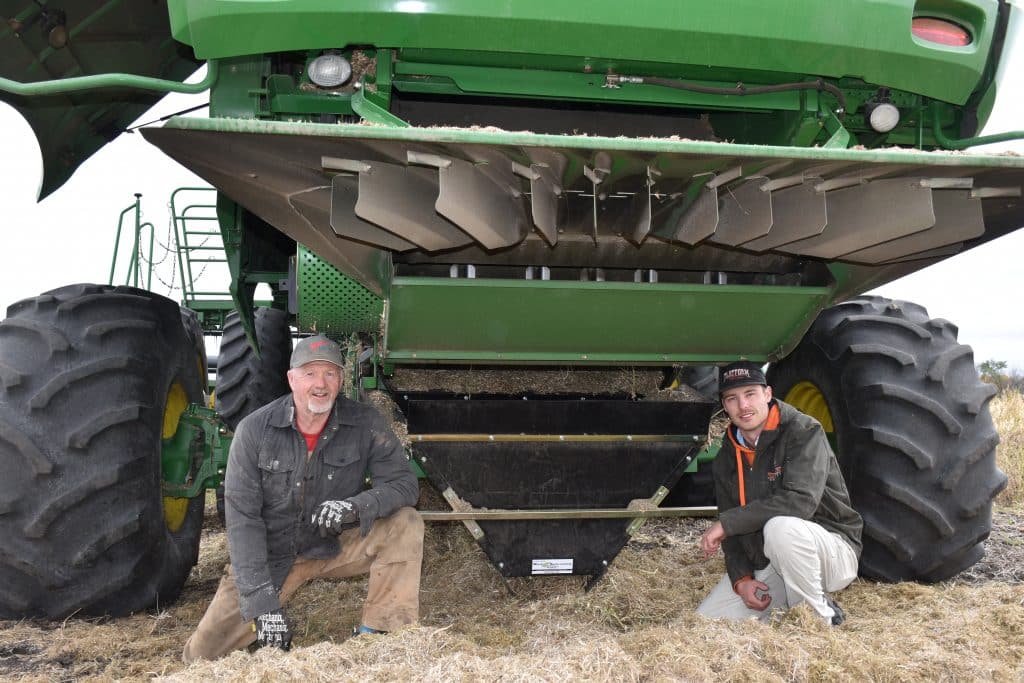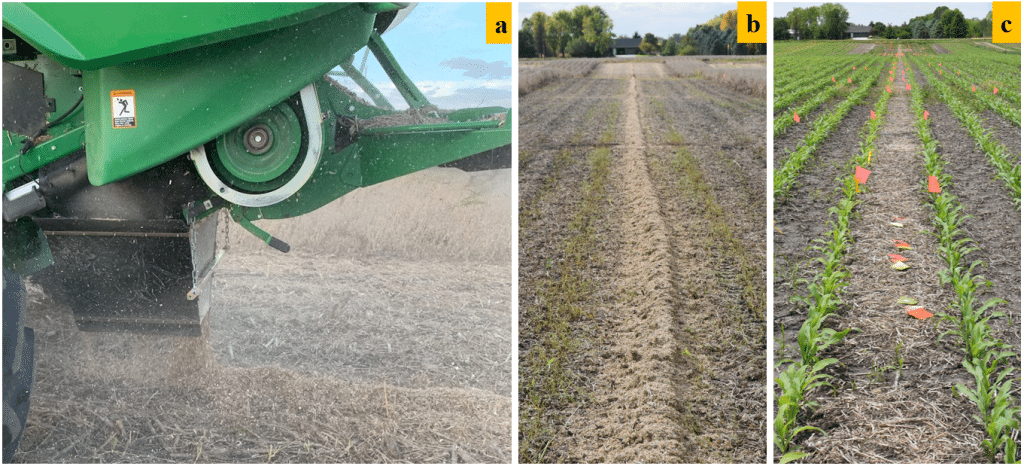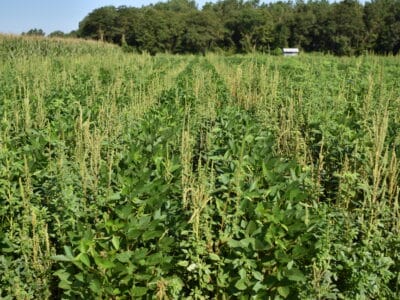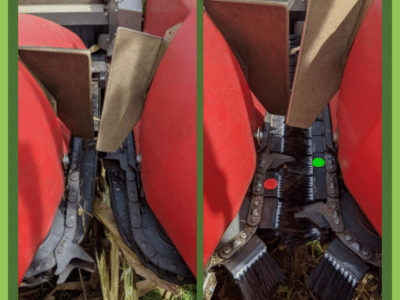See those waterhemp escapes towering over your soybeans right now? They’re looking forward to harvest, when combines will mow them down and spread their weed seeds across your entire crop field.
What if there were a better option – say, a chance to contain them in less than 5% of your field?
“The chaff lining system concentrated more 99% of waterhemp seeds…to 5% of the field. In the following year’s cornfield, the chaff lines reduced waterhemp emergence by one week and growth by 60% compared to waterhemp growing outside the chaff line.”
Ramawatar Yadav
That’s what my team at Iowa State University found in a recent study funded by the Iowa Soybean Association and United Soybean Board. We evaluated a tactic called “chaff lining” to see how effective it might be at concentrating common weed seeds in a narrow row behind the combine, where we found they are less likely to survive and can be easier to manage.
How Chaff Lining Works
Herbicide-resistant weed populations initially start in isolated patches within a field, then spread across the field primarily with the help of combines. Efforts to limit this type of weed seed spread has become a major focus of Australia’s small grain producers. There, growers are using several harvest weed seed control (HWSC) methods to collect, manage and even destroy weed seeds at the time of crop harvest.
One of the most common methods of HWSC is chaff lining. This method relies on a separator baffle inserted behind the combine’s sieves to separate chaff from the straw, because weed seeds move through the combine primarily in the chaff. Chaff and weed seed are diverted to a chute attached at the rear of the combine, whereas straw exits the combine as usual and is spread across the field. A chaff lining kit typically costs around $5,000, but they can also be constructed on your own, using commonly available materials, such as sheet metal, PVC pipes and even used draper belts.

The chute concentrates the weed seed-bearing chaff fraction into a narrow strip behind the combine, usually ranging from 12 to 20 inches wide. These narrow strips, or chaff lines, are then left undisturbed during the following growing season.
The next year’s crop can be planted as usual keeping the chaff-line between two rows. Chaff lining relies on the mulch effect of the concentrated crop chaff to produce an environment less favorable for weed seed germination and survival. Since chaff lines must remain undisturbed, this practice is best suited for no-till growers.
Our Research Findings
A prerequisite for the success of any harvest weed seed control method is that the majority of weed seed must remain on the mother plant at the time of crop harvest.
In our experiments conducted by a former ISU graduate student Avery Bennett, waterhemp retained about 70% of the seeds on the plant at the time of Iowa soybean harvest on October 1, 2020. This indicates that waterhemp is likely to retain most of the seeds during the typical Midwest soybean harvest periods.
The chaff lining system concentrated more than 99% of waterhemp seeds exiting the combine into the chaff line. This means those waterhemp seeds were confined to less than 5% of the field area.
In the following year’s cornfield, the chaff lines reduced waterhemp emergence by one week and growth by 60% compared to waterhemp growing outside the chaff line. Additionally, an application of postemergence herbicides was needed only inside the chaff line area to manage waterhemp, suggesting the possibility of lower overall herbicide use, should precision spray technology become widely available.

Why We Need New Tactics Like This
Some non-chemical weed management tactics such as cover crops, narrow-row cropping, or tillage are already in practice across the industry. These are effective non-chemical tactics that focus on early-season control similar to herbicides. However, once weed seedlings survive the early-season stresses, currently no other options are available to manage the escapes.
These results show chaff lining has significant potential to help manage herbicide-resistant pigweed escapes in US crop production fields at the end of the season and diversify current weed management programs. Implementation of this technology in soybean-based cropping systems should not be perceived as a replacement of an existing weed control tactic, but rather an expansion of the weed management toolbox.
It is evident that non-chemical weed control tactics are essential to preserve the utility of current and future herbicides, which has been threatened by the mounting cases of herbicide-resistant weed populations.
See more on chaff lining from the GROW News Page here.

Text and photos by Ramawatar Yadav, Iowa State University





























































































